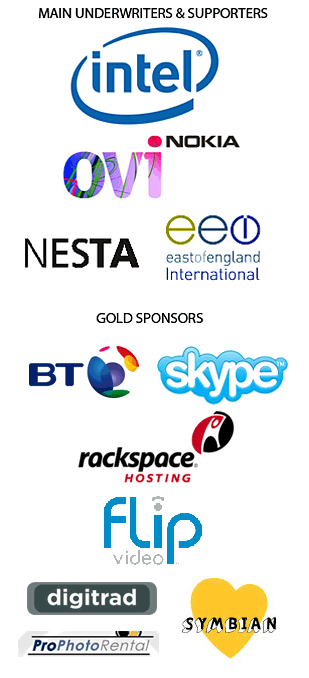Redefining Digital Inclusion
by Renee Blodgett on July 6, 2009 at 9:18 am
We met with Tristan Wilkinson this morning at Savoy Place in London. Tristan, who is Intel’s Director for Public Sector for Intel EMEA, wears many hats and has several interests.
Below Tristan with Perveen Akhtar, Intel UK PR Manager
He tells us about a program called One Goal which will be launched in August and piggyback off the South African World Cup. The goal is to get 30 million online signatures in an effort to help make poverty history. Take note: 75 million children still don’t have access to primary school education in the world.
Tristan asks, “do those that enjoy the benefits of technology have a moral right over those who don’t? If you don’t have access, you’re missing so much.” He adds,”for example, when did a blue collar worker need access to the Internet and many of these tools simply to get a job? It’s particularly important in this economic climate.”
He talks about the broken education system where we’re still assessed by written exams, rather than an interactive system that allows students to exchange ideas and use technology to learn.
Essentially you’ve got a 21st century learner in a 19th century environment and the two are starting to cancel each other out. And, what are the other things that allow these technology tools to be unleashed? We have to figure out a way to embrace and value informal learning, such as self-study.
The thread is one that isn’t a new one: the digital divide, largely an economic one, however it’s beyond a financial issue, it’s also attitude; attitude among teachers and among parents.
Parents have learned about the perils of Internet use but haven’t necessarily learned about about the value that it can bring to their child’s life, particularly in the classroom.
Robert Scoble asserts that the change will come from the kids, not from top down. And, adds that it’s not about the technology or being able to afford it, it’s about lack of knowledge and education – what’s out there? what tools can help me find a better job? go to a better school?
We discuss key drivers. If success and nirvana is a digitally educated population, we shouldn’t have to wait twenty years for people to catch up to embrace these changes…with technology change accelerating at such a dramatic rate, there needs to be an effort to bring those who are being left behind forward.
Tristan asserts that the problems are very fragmented and that there needs to be a more concerted effort to bring groups like us together to take action.
Sky adds, “the best thing that educators can do is to be totally open to the new devices that already have some of these services embedded….but we have legislation.” Robert has become demoralized and is one of the reasons he doesn’t get involved in this debate regularly.
We also discuss the role of the press….how do the press educate parents and educators and what form it takes. “It’s not that my children are going to get online and be stalked but that if they don’t get online and learn how to use these new technologies, they won’t get jobs, they will be left behind. Parents need to understand that the jobs of the future are going to require them to support their kids to learn how to use technology. There may not be any public or private funds for it but the change needs to happen.
We need to redefine Digital Inclusion. The definition of digital inclusion today is basic access. It doesn’t include basic skills such as understanding some of the technology and social media schools to network and make friends not just locally for globally. It increases their job and life opportunities significantly.
It’s time to move that definition beyond simple access. We need a new definition that policy makers, technology creators, parents, and educators can rally around. There will be a revolution when more and more students get their hands on some of these devices and start using them in the classroom.


